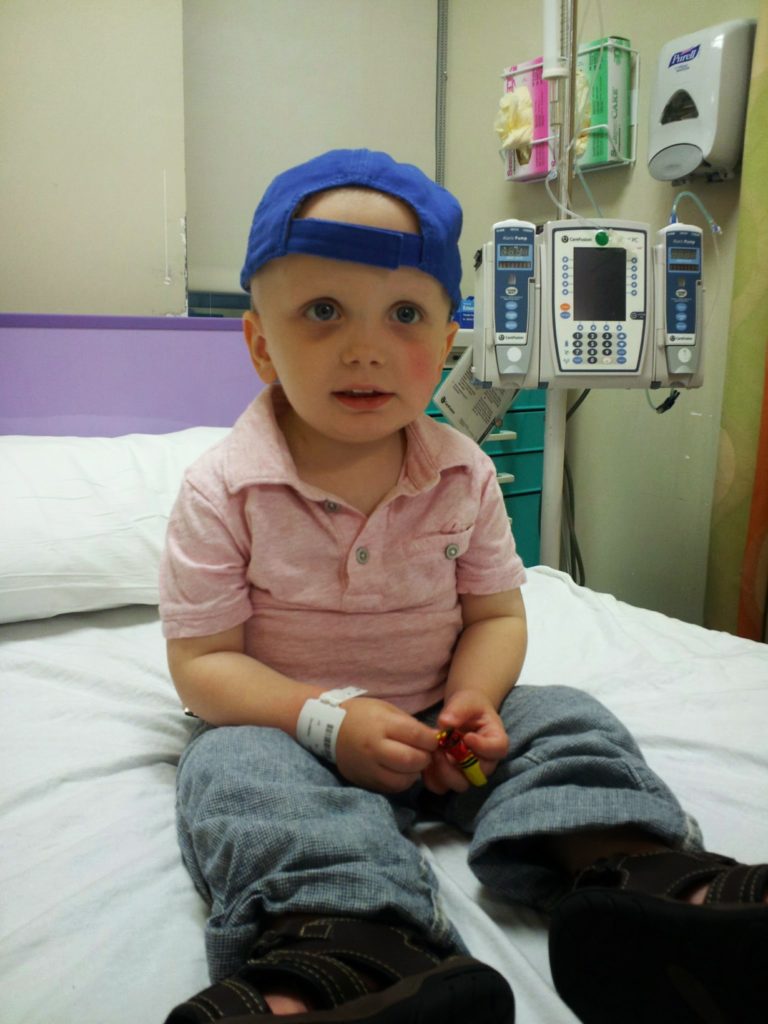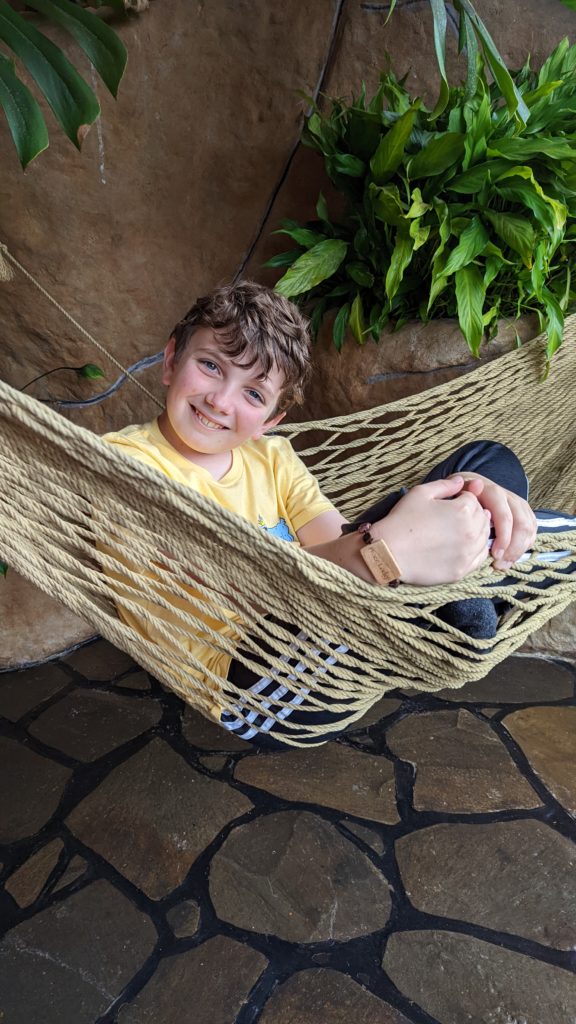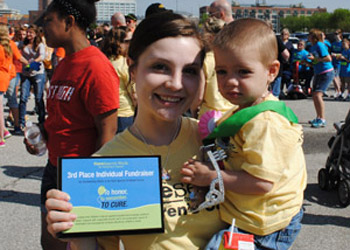As a pediatric emergency medicine physician, Kim Giusto is no stranger to the symptoms of acute lymphoblastic leukemia (ALL), an aggressive form of blood cancer, in children. In 2013, her professional life became her personal life. She noticed her son, Cole, had been sick for five days with cold symptoms, a fever, and a rash known as petechiae.

“I also noticed he had gained some weight and was breathing a little fast, which concerned me that something more serious was going on,” said Kim. “I brought him to the hospital where I work and my boss at the time took care of him.”
Tests showed that Cole’s blood cell lines were abnormal. Although Kim knew this was a concern for leukemia, she and her husband remained hopeful.
“As results started to come back, I was hopeful it was something infectious,” said Kim “But the moment my boss walked in, I could see he had been crying. I screamed. I will never forget that moment.”
In February of 2013, at only 20 months old, Cole was diagnosed with T-cell ALL, an aggressive form of ALL. Cole displayed incredible strength during more than three years of toxic chemotherapy treatments.
“Cole was a warrior through his treatments. They called him the mayor. He would walk onto the chemo unit with sunglasses, a hat, and confidence at three years old,” said Kim. “It’s like a roller coaster ride. You have your ups and downs. Even if things are going the way they should, it’s sometimes hard to see the light at the end of the tunnel but you push through, because you have to.”
The majority of the children who survive cancer will develop chronic health conditions including secondary cancers, severe musculoskeletal problems and cardiovascular disease, due to the toxic treatments used to save their lives.

“As we move towards improved survival rates for ALL and other pediatric cancers, my hope is that we can lessen the side effects related to cancer treatments and develop new treatments for less common pediatric cancers,” said Kim.
“When I was three-years-old, my parents and I did the CureSearch Walk and our team was called Cole’s Crew,” he said. “It’s important to me to support the CureSearch mission because we need to end the misery that so many young kids like me go through when they’re diagnosed with cancer.”
With support from generous donors, advocates and volunteers who participate in fundraising events, CureSearch is funding groundbreaking research and accelerating the development of safer, more effective treatments for kids like Cole, who is now 11-years-old and cancer free.
Cole has continued to be an advocate for childhood cancer, and is becoming more involved in fundraising and bringing awareness to the urgent need for new pediatric cancer research.
CureSearch has adapted a strong co-funding model and partners with other childhood cancer foundations to fund projects that are working to develop new therapies for hard-to-treat tumors like ALL.
With funding from a CureSearch Young Investigator Award, Dr. Loretta Li of Lurie Children’s Hospital / Northwestern University studies a high-risk subtype of B-cell ALL, which is dependent on the JAK2 protein, but resistant to classic JAK2 inhibitors. Her lab is developing new compounds that can overcome resistance to ruxolitinib, a therapy with demonstrated clinical safety for use in children with relapsed/refractory cancers that harbor the JAK2 mutation.
September is Childhood Cancer Awareness Month. You can make an impact and support the development of new treatments for kids with cancer and give them a chance at long, healthy life. Make a gift today and help fund next-generation research: https://give.curesearch.org/ccam.



